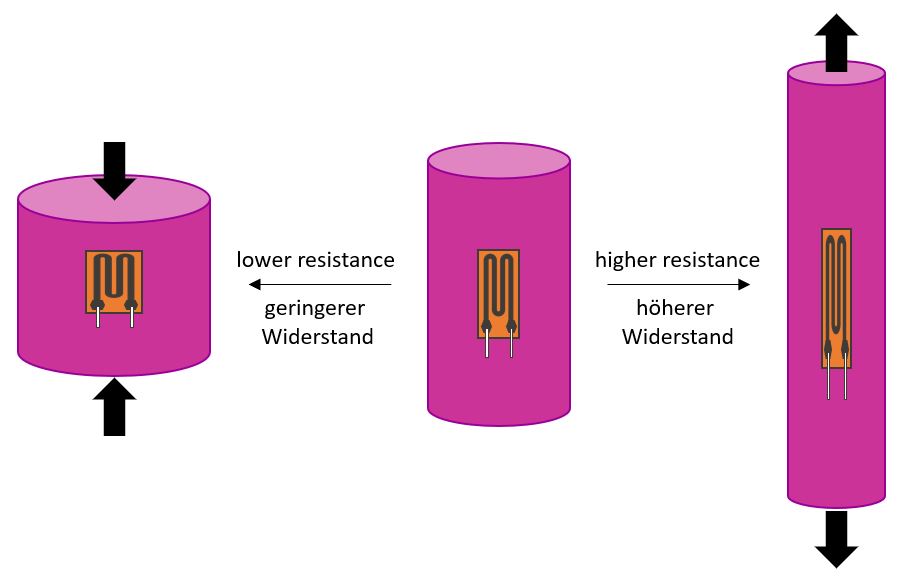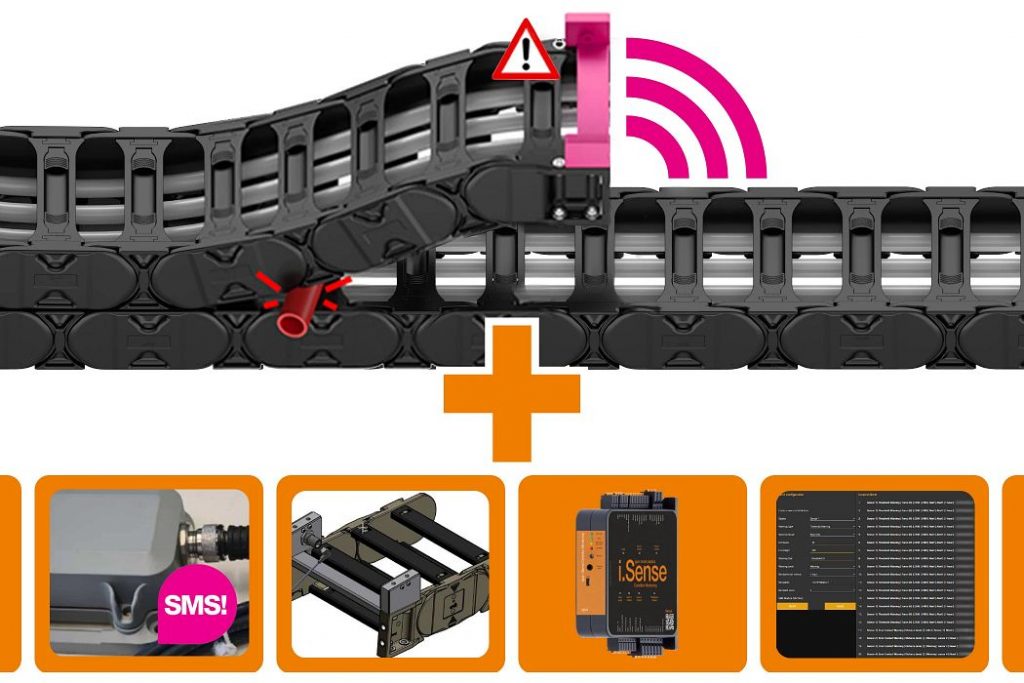More about the sensors in smart plastics condition monitoring systems: Part 1 – the strain gauge sensors in the EC.P system
Richard Habering | 27. April 2022
You have to control push/pull forces on energy chains. Wherever forces increase, risks do too. The i.Sense EC.P system gives you full control, including recommending shutdown. Usable in any e-chain®, unsupported or gliding, these sensors work even with changing loads and fluctuating environmental parameters.

There are two EC.P sensor unit variants to be used depending on application environment:
- Strain gauge force sensors
- Load cell in the FTA/floating moving end
In the first variant, the EC.P sensor unit consists of a strain gauge sensor block and a dummy block, both of them screwed to the mounting bracket. This variant is a suitable standard for most applications. Then there is the load cell variant, which is usually part of a complete engineering project. The sensor is integrated as a load cell into the floating moving end (FTA, or floating tow arm).
Strain gauge sensors are small sensors that measure a relative change in length. They often consist of a protective top layer over a wire applied in a zigzag pattern to a thin plastic backing. If the strain gauge sensor (and thus also the wire) is compressed, its resistance decreases; if it is stretched, its resistance increases. Elongation can be calculated from the change in resistance. You can use this characteristic by applying strain gauges to components whose elongation you want to determine.

Four strain gauge sensors are used in the EC.P sensor blocks, each mounted in the inner corners. They detect frame deformation, allowing the calculation of push/pull forces acting on the e-chain with the results then transmitted via cable to a DIN top-hat rail module installed in the switch cabinet. The vast majority of failures are preceded by an increase in force due to such factors as foreign bodies, snow/ice, misalignment, and deformed or loose guide troughs. If the acceptable forces are exceeded, the i.Sense EC.P system detects that fact, reports it, and switches the system off quickly in order to prevent expensive follow-on or total damage. Here is an example: an international port operator.

